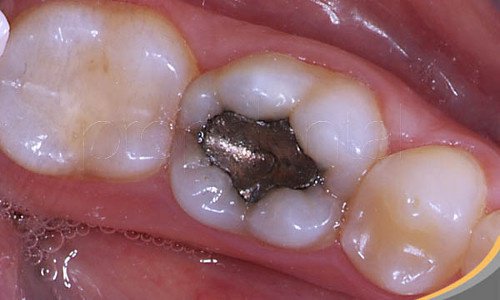The Health Risks of Dental Amalgam Fillings

Did you know that dental amalgam fillings contain mercury, which is a heavy metal is toxic to your health? Were you aware that using amalgam fillings is even prohibited in some countries, due to the risks involved? Here are some health risks related to this type of filling, and what you can do about it.
You might like: How Can I Tell If I Have Mercury in My Body?
In today’s article, we’ll tell you everything you need to know about the health and safety of dental amalgam fillings. Keep reading to find out what they are how they can affect your health, and what options you have for replacing your amalgam fillings.
What are amalgam fillings?
Amalgam is a silver-colored material made up of a combination of various metals, particularly mercury, which dentists use to fill cavities that appear as the result of tooth decay.
Today most countries use other materials for dental fillings because numerous studies have shown that the levels of mercury are toxic both for the recipient of the filling, as well as the dentist who works with it.
In addition, there’s a growing environmental movement to reduce the use of mercury-laden products, because they have a negative impact on the planet.
Since 2008, the use of amalgam fillings has been banned in countries like Sweden, Norway, and Denmark.
Exposure to mercury
An amalgam filling contains between 120 and 570 mg of mercury, which is slowly released over time thanks to the effects of saliva, stomach acids, food, high temperatures, and more.
It produces mercury vapors that are absorbed by the body day after day over the course of your lifetime, making these fillings a substantial source of continuous toxicity.
However, you should keep in mind that exposure to mercury can result from any contact with products that contain it. These include thermometers, light bulbs, batteries, cosmetics, skin brightening creams, paints, pesticides, etc.
Studies have also shown that large ocean fish like tuna and swordfish can contain dangerous levels of mercury, so you shouldn’t eat them in excess.
Health hazards
One of the biggest risks of mercury is that while your body naturally removes a portion, a significant amount of this heavy metal actually accumulates in the brain. Here, it can remain for years and have serious side effects.
It can potentially cause a progressive degeneration of the neurons, which has been linked to diseases like Alzheimer’s and Parkinson’s.
Another serious health problem can occur in pregnant women. It’s possible that mercury could cross the placental barrier and reach the central nervous system of the fetus.
Mercury can also accumulate in the gastrointestinal tract, the mouth, the lungs, the thyroid gland, the pituitary gland, and more.
Can amalgam fillings be removed?
Once people learn about the risks that the mercury found in amalgam fillings pose to their health, they usually want to remove them. This is especially true for people already suffering from effects but hadn’t yet found the cause.
The answer is yes, a dentist can remove them, but he or she must do it very carefully. If it’s impossible to follow a very strict protocol of removal, it’s best to leave these fillings in place. This is because it’s necessary to keep both the dentist and the patient from being exposed to a sudden release of mercury. This could cause much greater damage to their health.
Always seek a trained professional with experience in extracting these types of fillings, and make sure you follow these guidelines:
- Keep the entire mouth isolated during the extraction, to avoid swallowing any remnants of the filling.
- Use eye protection.
- Use an oxygen mask.
- Perform the necessary removal in a cold environment.
- Remove the filling in one piece, and quickly.
- Replace the old filling with a new one of better quality materials.
- Treat the area with antiseptic.
For both the patient and the dentist, in case of exposure to mercury during this process, we recommend treatment with a natural remedy.
All Natural Detox Agents
Of course, you should seek medical attention immediately from a professional. However, you can complement your medical treatment with chlorella to help remove heavy metals from the body. Chlorella is an algae-derived product and a powerful detox agent that helps eliminate heavy metals.
Additionally, the high chlorophyll content will help remove not only heavy metals but also any other harmful toxin.
Cilantro, garlic, and magnesium can also be very beneficial for helping alleviate issued related to amalgam fillings.
All cited sources were thoroughly reviewed by our team to ensure their quality, reliability, currency, and validity. The bibliography of this article was considered reliable and of academic or scientific accuracy.
- Nylander, M., Friberg, L., & Lind, B. (1987). Mercury concentrations in the human brain and kidneys in relation to exposure from dental amalgam fillings. Swedish dental journal, 11(5), 179-187.
- Takahashi, Y., Tsuruta, S., Hasegawa, J., Kameyama, Y., & Yoshida, M. (2001). Release of mercury from dental amalgam fillings in pregnant rats and distribution of mercury in maternal and fetal tissues. Toxicology, 163(2-3), 115-126.
This text is provided for informational purposes only and does not replace consultation with a professional. If in doubt, consult your specialist.








